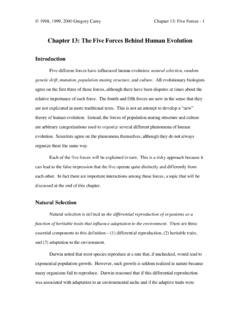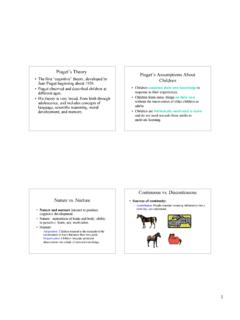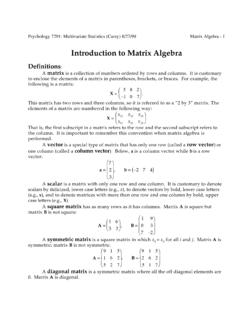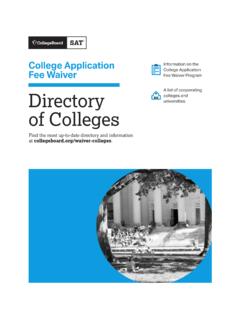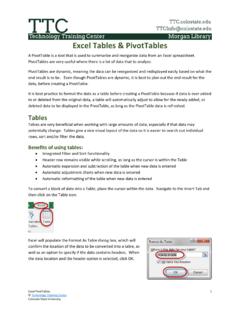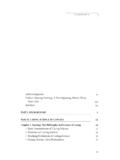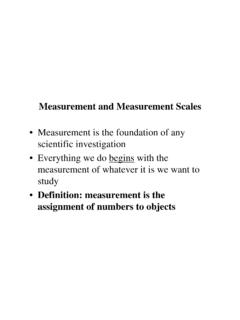Transcription of Temperament & Personality - University of Colorado Boulder
1 1 Temperament & Personality Temperament : constitutionally basedindividual differences in emotion, motor,reactivity and self-regulation that demonstrateconsistency across situations and over time Temperament is biologically based: Heredity,neural, and hormonal factors affect response tothe environment. Temperament can be modulated byenvironmental factors; parental of Thomas and Chess sTemperament Dimensions2 Temperament Dimensions (continued)Thomas and Chess s Temperament Types Easy babies: 40% of infants; adjust easily tonew situations, quickly establish routines, aregenerally cheerful and easy to calm. Difficult babies: 10% of infants; slow toadjust to new experiences, likely to reactnegatively and intensely to stimuli and events. Slow-to-warm-up babies: 15% of infants;somewhat difficult at first but become easierover Dimensions of InfantTemperament (Rothbart & Bates) Fearful distress Irritable distress Attention span and persistence Activity level Positive affect Rhythmicity4 Role of Temperament in SocialSkills and Adjustment Differences in anger/irritability, positiveemotion, and ability to regulate emotions areassociated with social competence andadjustment.
2 Children who are negative, impulsive, andunregulated tend to have poor peer relationsand get in trouble with the law. They aredifficult partners and roommates. Behaviorally inhibited children are more likelyto experience anxiety, depression, and Social Adjustment Goodness of fit : the degree to which anindividual s Temperament is compatible withthe demands and expectations of his or hersocial environment Parents can modulate children s temperamentby their influences on the environment. What is good parenting for a difficultbaby/child? What is good parenting for a slow-to-warm-upor inhibited baby/child?





